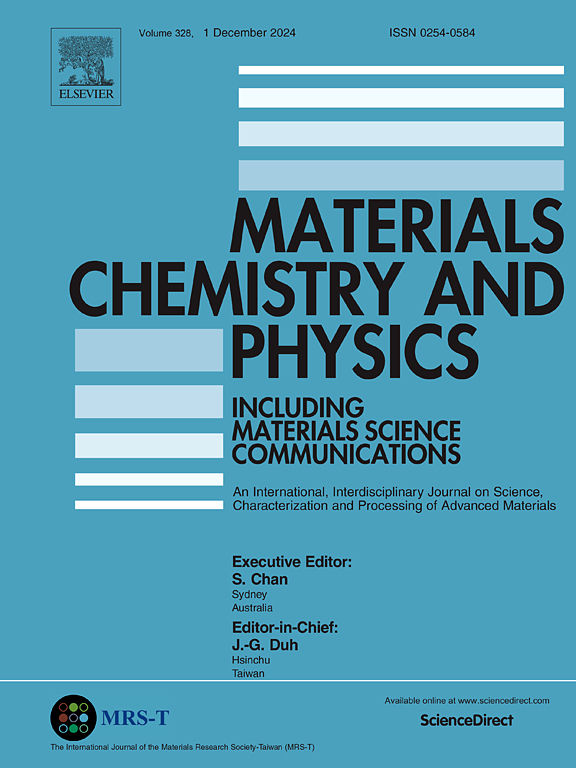Nitrogen-doped nanotube production using hematite-quartz-nickel as catalysts and their application in hydrogen generation
IF 4.7
3区 材料科学
Q2 MATERIALS SCIENCE, MULTIDISCIPLINARY
引用次数: 0
Abstract
Nitrogen-doped multiwalled carbon nanotubes (N-MWCNTs) were synthesized via aerosol-assisted catalytic chemical vapor deposition (AAC-CVD) using earth-abundant catalysts composed of hematite, quartz, and varying amounts of nickel. The effects of nickel concentration and synthesis temperature (750–950 °C) were systematically evaluated to optimize the structural, morphological, and electrochemical properties of the resulting nanomaterials. The CT2-Ni catalyst (9 wt % Ni) demonstrated the highest production efficiency, reaching ∼280 %, and promoted the growth of thin entangled nanotubes with average diameters as low as 35.5 nm. Raman spectroscopy revealed significant structural disorder at lower temperatures (ID/IG = 0.93 for CT1-750), which correlated with enhanced catalytic activity. Electrochemical measurements showed that N-MWCNTs synthesized at 750 °C delivered high current densities of >100 mA cm−2 at −0.6 V vs. RHE, supported by favorable electrochemical parameters such as low charge-transfer resistance (22.9 Ω) and high double-layer capacitance (5.25 mF cm−2). These results highlight the synergistic effect between Ni doping and defect engineering in optimizing the HER activity. The materials developed in this study offer a scalable and cost-effective alternative to noble-metal-based catalysts, bridging the gap between fundamental research and industrial hydrogen production. This study confirms that a strategic catalyst design using common oxides can drive sustainable energy solutions.

以赤铁矿-石英-镍为催化剂制备氮掺杂纳米管及其在制氢中的应用
采用气溶胶辅助催化化学气相沉积(AAC-CVD)技术,以赤铁矿、石英和不同含量的镍为催化剂,制备了氮掺杂多壁碳纳米管(N-MWCNTs)。系统地评估了镍浓度和合成温度(750-950℃)的影响,以优化所得纳米材料的结构、形态和电化学性能。CT2-Ni催化剂(9 wt % Ni)表现出最高的生产效率,达到~ 280%,并促进了平均直径低至35.5 nm的薄纠缠纳米管的生长。拉曼光谱显示CT1-750在较低温度下存在明显的结构紊乱(ID/IG = 0.93),这与催化活性增强有关。电化学测量结果表明,在750°C下合成的N-MWCNTs在−0.6 V时与RHE的电流密度高达>;100 mA cm−2,并具有低电荷转移电阻(22.9 Ω)和高双层电容(5.25 mF cm−2)等有利的电化学参数。这些结果突出了Ni掺杂和缺陷工程在优化HER活性方面的协同作用。本研究中开发的材料提供了一种可扩展且具有成本效益的贵金属基催化剂替代品,弥合了基础研究和工业制氢之间的差距。这项研究证实,使用普通氧化物的战略性催化剂设计可以推动可持续能源解决方案。
本文章由计算机程序翻译,如有差异,请以英文原文为准。
求助全文
约1分钟内获得全文
求助全文
来源期刊

Materials Chemistry and Physics
工程技术-材料科学:综合
CiteScore
8.70
自引率
4.30%
发文量
1515
审稿时长
69 days
期刊介绍:
Materials Chemistry and Physics is devoted to short communications, full-length research papers and feature articles on interrelationships among structure, properties, processing and performance of materials. The Editors welcome manuscripts on thin films, surface and interface science, materials degradation and reliability, metallurgy, semiconductors and optoelectronic materials, fine ceramics, magnetics, superconductors, specialty polymers, nano-materials and composite materials.
 求助内容:
求助内容: 应助结果提醒方式:
应助结果提醒方式:


